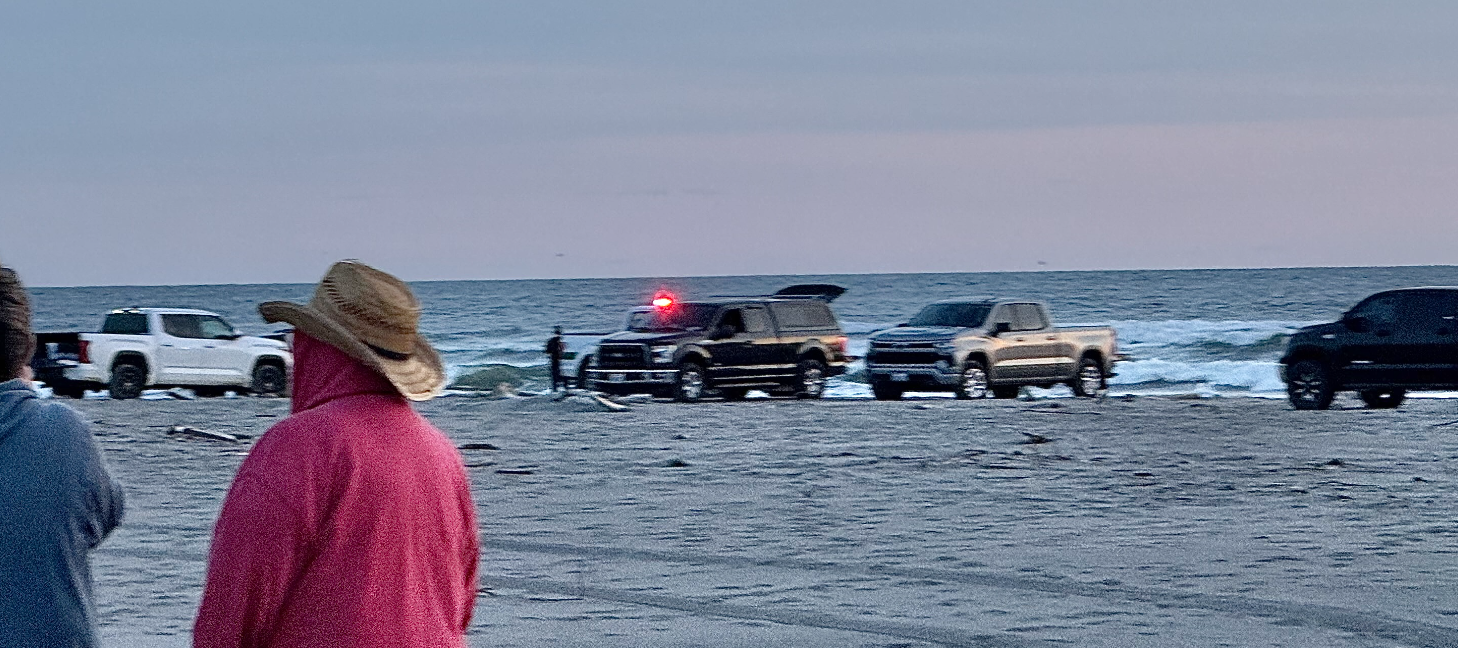Peninsula Rocks & Roots: Alluvial landscape features – Coastal dunes
Published 4:00 pm Tuesday, February 28, 2006
DefinitionsSlow dune formation*: Dune building slowly over decades or centuries, growing by regular additions of small amounts of sand; this results in wide large dunes forming over many years.
Fast dune formation: Dune building in years immediately after subduction zone earthquakes, where large amounts of sand are available in the nearshore environment due to subsidence and erosion; this results in rapid formation of large, wide dunes as the shoreline restabilizes.
Saltation: From the Latin saltare, to jump; the process by which grains of alluvium are tossed into air or water from the sedimentary bed, and move some distance before sinking to the surface.
Barchan dunes: Crescent-shaped dunes with a large middle section and more mobile ends, which curve forward of the main body of the dune; barchan dunes form and move perpendicular to the wind.
Parabolic dunes: Crescent-shaped dunes with a large middle section and less mobile ends, which drag behind the main body; parabolic dunes form and move perpendicular to the wind.
Transverse dunes: Long ridges perpendicular to prevailing wind direction; these are formed of rows of barchan or parabolic dunes.
Oblique dunes: Long dune ridges at angle to prevailing winds; formed of rows of barchan or parabolic dunes.
Star dunes: Dunes with several legs, formed when winds regularly blow from several directions; formed barchan or parabolic dunes that have combined.
* These phrases were compiled for these articles, and do not represent formal geologic usage; they offer a way to distinguish between regular and earthquake dune building processes, which occur at vastly different speeds.
Basic Concept: The youngest landscapes in this area are alluvial and include dunes and adjacent beaches. Alluvial formations are formed of sediments moved by water and wind. Dunes form along oceans, composed of sands carried along the shore by water, brought ashore by waves, moved off the beach and shaped into dunes by wind. Alluvial landscapes include dunes, beaches, estuary flats, river entrances and islands. They change shape, position and size with the seasons; some alluvial landscapes change shape every day.
Dunes form along this coast in two ways; slow dunes form by blowing sand onshore from ocean beaches day by day for centuries; fast dunes form after subduction zone earthquakes, by moving large amounts of sand onshore in a few years. The dune-building mechanism is the same for both, only the speed and duration of dune-building events change. The topics of formation of fast dunes after earthquakes and dune fields will be picked up in later columns.
Here, the focus is the formation of oblique slow dunes by normal dune-building processes along present shorelines.
In the absence of vegetation, sand grains move around very easily; sand grains are shaped by winds each day into crescents (barchan dunes, with more mobile ends curving ahead of them), parabolas (with more mobile middles and fixed ends trailing behind, ends are often trapped by vegetation), ridges (transverse or oblique dunes, where barchan or parabolic dunes link up into long formations), and stars, where barchan or parabolic dunes collide from several directions.
The term “slow dune formation” describes an oblique dune that forms along the ocean with steady northwest and southwest winds over many years. The combined effect of these northwest and southwest winds is to form ridges that parallel the ocean beach at oblique angles to prevailing northwest and southerly winds.
For all dunes, sand grain size, composition, supply, wind speed, wind direction and vegetation are key to determining how big the dunes will ultimately be, the shape they will take, and where they will reside. Dune building along the ocean is also dependent upon waves and long shore currents. Currents pick up sand grains and carry them along shorelines, depositing sand within reach of waves. Bigger waves pick up sand off the bottom and carry it inshore. Smaller inshore waves bring it up on the beach. Winds dry out the sand; blowing it upwards beyond the reach of surf in the open or loose sand area of the beach, then into dunes. Think of it as a long series of jumps by each individual grain: down river, out into the long-shore current in the ocean, along the shoreline in the long-shore current, then in surf where big waves bring the grains into shallower water, and smaller waves carry it up onto beaches. Once on the beach, wind blows sand grains out of the intertidal area, across loose sand areas and up into the foredune.
When sand supplies are low and steady, dunes build slowly upward and outward. When sand supplies are large, dunes grow rapidly. With very large supplies, the beach line may also move out rapidly, resulting in low interdunal areas between dunes, often with isolated barchan and parabolic dunes in between oblique dune ridges. Sand sheets may also form, large masses of sand that shift around with daily winds – more on sand sheets later.
Dune plants play an important role in stabilizing loose sand. They must be salt tolerant along the ocean, able to withstand drought and strong winds, grow without soil in conditions of low fertility, and be buried in loose sand. Important local dune-forming plants include three species of grass: American dune grass (Leymus mollis), American beach grass (Ammophila breviligulata), and European beach grass (Ammophila arenaria). Dune and beach grasses thrive when loose sand is regularly blown on top of them, and can easily accommodate a foot of sand per year. This is noticeable in summer, when dry sand blows off wide, dry summer beaches into dunes during strong northwest winds. Winter storms also move sand up and into vegetated dunes on strong southwest winds and high waves, dumping inches of sand with each storm on top of dune and beach grasses.
Behind grasses and herbs come woody shrubs and trees, which also help stabilize dunes. Wind shapes the sand into dunes, plants hold the sand in place, and tolerate more sand building up on top of them. The result is long relatively stable dunes along the ocean beaches.
Local Elements: Dunes are actively reshaped each year. They are usually covered with dune or beach grasses, with fewer and younger trees moving west towards the ocean, and older trees to the east. These young grasslands are soon replaced by trees, unless trees are actively removed. In the absence of wildfire, shore pines follow grasses within a few decades and are in turn followed by Sitka spruce and western hemlock, turning dune grasslands to coastal conifer forests.
Local Examples: Go to any local beach approach to see outer dunes, built by slow dune formation processes. In the summer, northwesterly winds blow sand up into the dunes from the expanse of loose sand between the dunes and water. Dry sand settles easily among growing grass stems and leaves. In the winter, both water and wind deposit sand in the dunes, often several inches per storm. Those areas are quite bare in appearance; beach and dune grasses are buried under thick mats of damp fresh sand; only old grass stems may still appear above the sand.
To see barchan and small transverse dunes as they form, and before dune plants bind the loose sand, go out on the beach in the summer and look at the loose sand between the intertidal area and the vegetated dunes. Small barchan dunes form during the summer months with steady northwesterly winds. These small protodunes can be seen walking from waterline to grassline on open beaches in the summer.
References, for more reading:
Carter, R.W.G. 1988. “Coastal Environments: An introduction to the Physical, Ecological and Cultural Systems of Coastlines.” Academic Press, 617 p.
Cooper, William S. 1958. “Coastal Sand Dunes of Oregon and Washington.” Geological Society of America, Memoir No. 72. 167 p.
Pilkey Sr., Orrin H., Pilkey, Walter D., Pilkey, Jr., Orrin H. & Neal, William J. 1983. “Coastal Design: A guide for builders, planners, & homeowners.” Van Nostrand Reinhold Co., Inc. 224 p.
Pilkey Sr., Orrin H., & Dixon, Katharine L. 1996. The Corps and the Shore. Island Press. 272 p.





